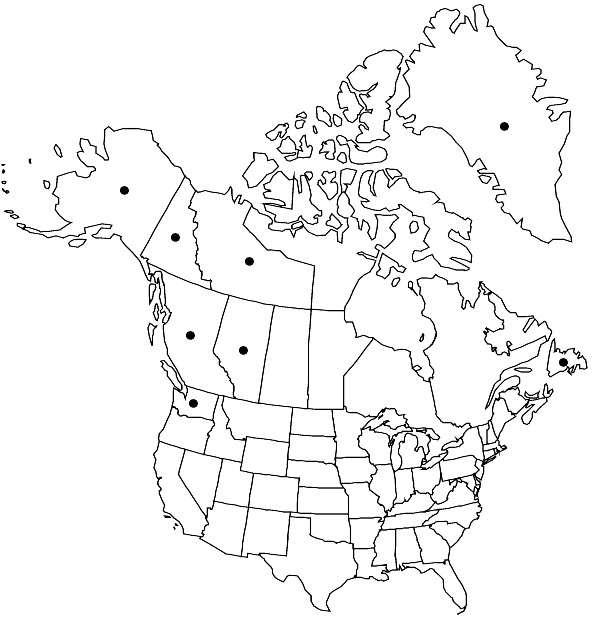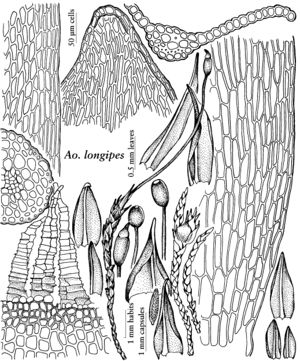Aongstroemia longipes
Bryol. Europ. 1: 173. 1846,.
Stems stiff, slenderly julaceous, sterile and young material filiform, central strand distinct. Leaves proximally minute, 0.5–1 mm, scalelike, becoming larger and ovatelanceolate distally; apex obtuse, subcucullate to acuminate-subulate in distal leaves; lamina 1-stratose; costa strong, less than a quarter of the leaf width, in section hydroids absent; median laminal cells (25–) 30–60 × 8–15 µm, thinner, longer and narrower at the margin and forming a smooth, non-erose, indistinct border parallel to the margin. Perigonium a dark knob or apical rosette wider than the stem, formed by largest leaves, incurved-tubulose, to twice the length of the cauline leaves, abruptly narrowed into a tubulose acumination that can longer than the leaf body. Perichaetium a large apical tuft, the leaves larger than stem-leaves, to 1.5 mm, long-lanceolate and tubulose, acuminate from a broad, sheathing base, in most distal leaves rapidly or fairly rapidly narrowed into a blunt subula. Seta 4–10 (–12) mm. Capsule exserted, brown, 0.6–1 mm, without stomates; peristome entire, perforate or divided nearly 1/2 distally, more or less vertically striolate to almost smooth basally, yellow and finely papillose to smooth distally; operculum to 0.4 mm.
Phenology: Capsules mature late summer.
Habitat: Moist, exposed, sandy or silty soil of depressions, river and stream banks in montane coniferous forest regions, subalpine regions, mountains, and northern latitudes
Elevation: low to high elevations
Distribution

Greenland, Alta., B.C., Nfld. and Labr. (Nfld.), N.W.T., Yukon, Alaska, Wash., Arctic, n Europe, n Asia, Atlantic Islands (Iceland)
Discussion
The only species in the genus reported for China, Aongstroemia orientalis Mitten of alpine regions, has been described as having an apex “sharply bent to one side at the tips” (Gao C. et al. 1999). Leaves in American populations of Aongstroemia longipes display this characteristic as well, although less distinctly. E. Nyholm (1986) indicated that A. longipes resembles Pohlia filum (Schimper) Mårtensson of similar habitats in Scandinavia, but that the leaf apex is sharply pointed in P. filum, and obtuse in A. longipes. For discussion of the species’ ecology see L. C. Bliss and J. E. Cantlon (1957). Aongstroemiopsis julacea (Dozy & Molkenboer) M. Fleischer, of Asia, differs in its autoicous sexuality, prominent excurrent costa, and lack of peristome (H. C. Gangulee 1969+, fasc. 2).
Selected References
None.
Lower Taxa
"/2" is not declared as a valid unit of measurement for this property.
